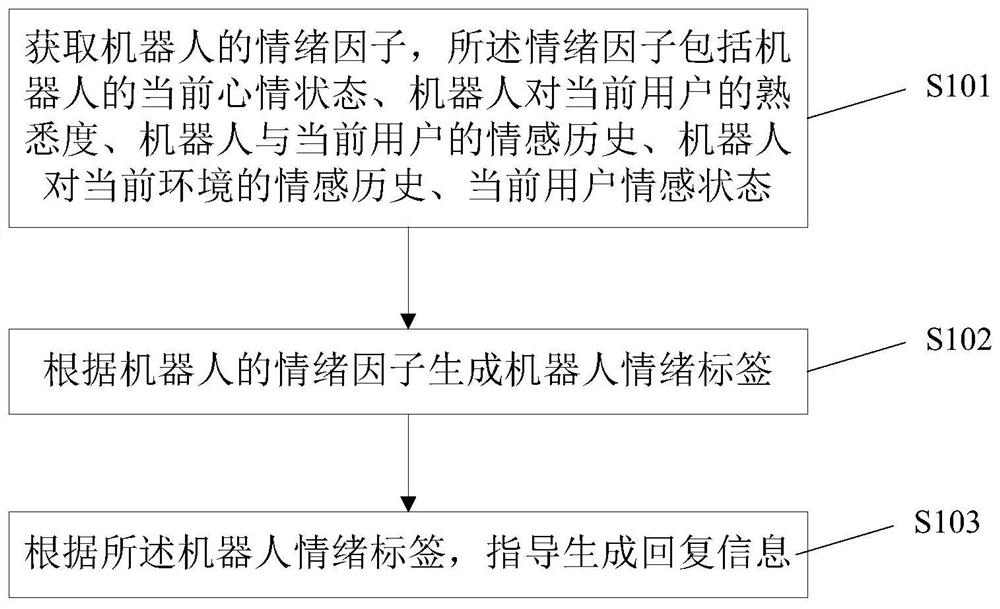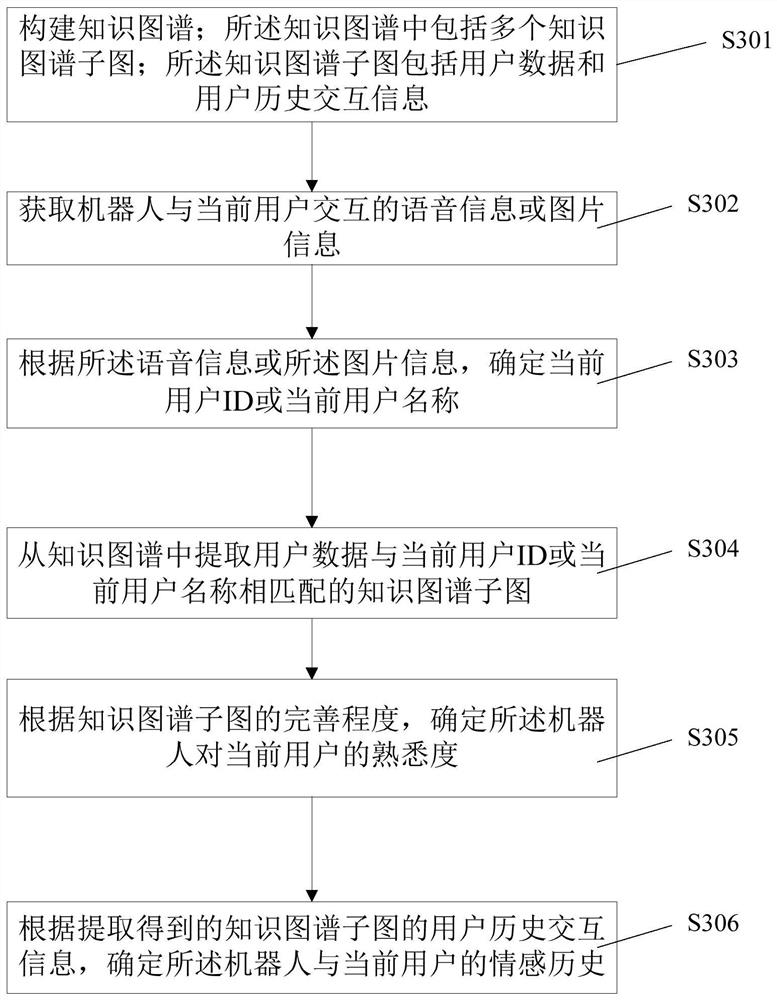Method and device for generating reply information based on robot emotional state
A technology for replying information and robots, applied in the field of intelligent robots, can solve problems that do not meet human-human interaction
- Summary
- Abstract
- Description
- Claims
- Application Information
AI Technical Summary
Problems solved by technology
Method used
Image
Examples
Embodiment 1
[0060] This embodiment provides a method for generating reply information based on the emotional state of a robot, see figure 1, the method includes:
[0061] Step S101, obtaining an emotional factor of the robot, where the emotional factor includes the current emotional state of the robot, the familiarity of the robot to the current user, the emotional history of the robot and the current user, the emotional history of the robot to the current environment, and the current emotional state of the user;
[0062] Specifically, the emotional factors of the robot are described by multi-dimensional data, for example, multi-dimensional vectors and multi-dimensional linked lists can be used to describe them. The current mood state of the robot refers to the current mood of the robot, such as happy, depressed, sad, etc. The familiarity of the robot to the current user includes: very familiar, generally familiar, unfamiliar, etc. The emotional history of the robot and the current user...
Embodiment 2
[0069] Embodiment 2 is based on Embodiment 1, and adds a method for obtaining emotional factors.
[0070] 1. The current mood state of the robot.
[0071] In terms of emotional factor processing, for the current emotional state of the robot, see figure 2 , the specific acquisition process is as follows:
[0072] In step S201, the current remaining power and usage time of the robot are counted.
[0073] Step S202, detecting the current network status and activity status of the robot.
[0074] Step S203: Determine the current mood state of the robot according to the remaining power, usage time, network status, activity status or pre-received mood specific information.
[0075] Specifically, the robot can determine the current mood according to the remaining power, usage time, network status, activity status, or mood-specific information. For example, if the robot's remaining power is lower than 10%, it is a hungry state, and the robot's current mood state is to ask the user...
Embodiment 3
[0111] Embodiment 3 On the basis of the above embodiment, a method for generating reply information is added.
[0112] The specific implementation process is as follows:
[0113] First, the robot emotion tag is used as one of the input information of the training model to guide the generation of the training model; the generation of reply information is guided according to the generated training model, and the specific form category used when replying the information is determined;
[0114] Specifically, the training model is an artificial intelligence model, and the training model is obtained by learning all the robot emotion labels by the artificial intelligence model. This method can start from human learning and use artificial intelligence methods such as machine learning to model people's emotional responses, determine people's emotional responses under the condition of different values of the above information, and then use the above information as the input of the art...
PUM
 Login to View More
Login to View More Abstract
Description
Claims
Application Information
 Login to View More
Login to View More - R&D
- Intellectual Property
- Life Sciences
- Materials
- Tech Scout
- Unparalleled Data Quality
- Higher Quality Content
- 60% Fewer Hallucinations
Browse by: Latest US Patents, China's latest patents, Technical Efficacy Thesaurus, Application Domain, Technology Topic, Popular Technical Reports.
© 2025 PatSnap. All rights reserved.Legal|Privacy policy|Modern Slavery Act Transparency Statement|Sitemap|About US| Contact US: help@patsnap.com



